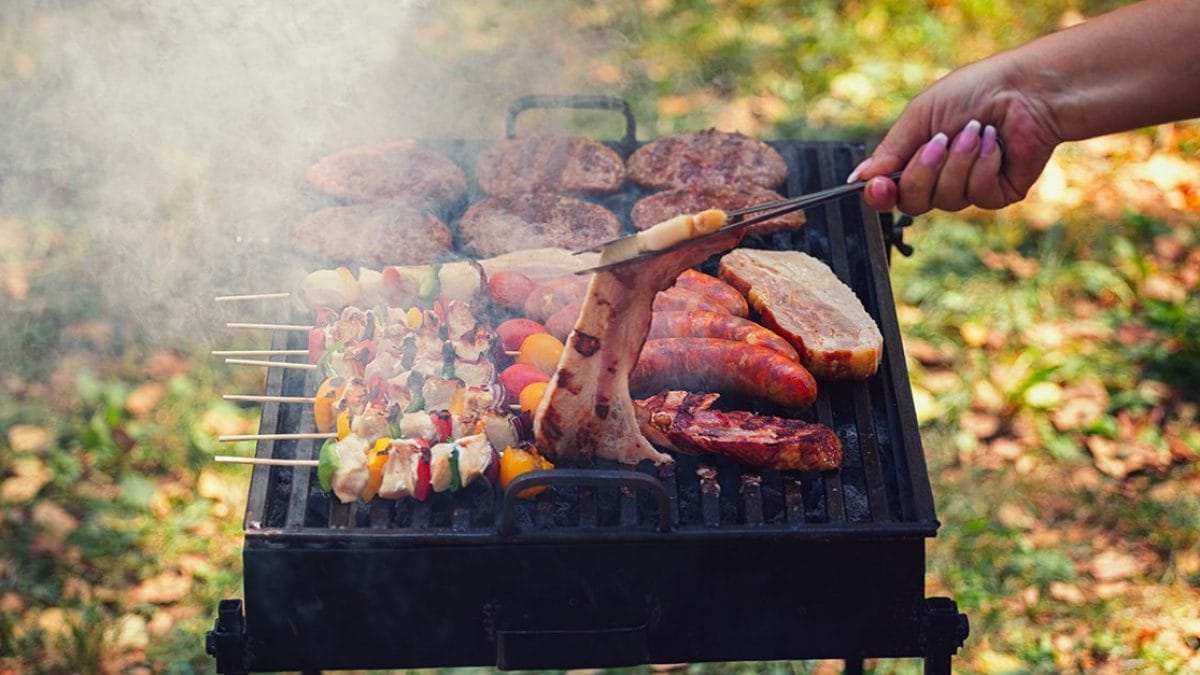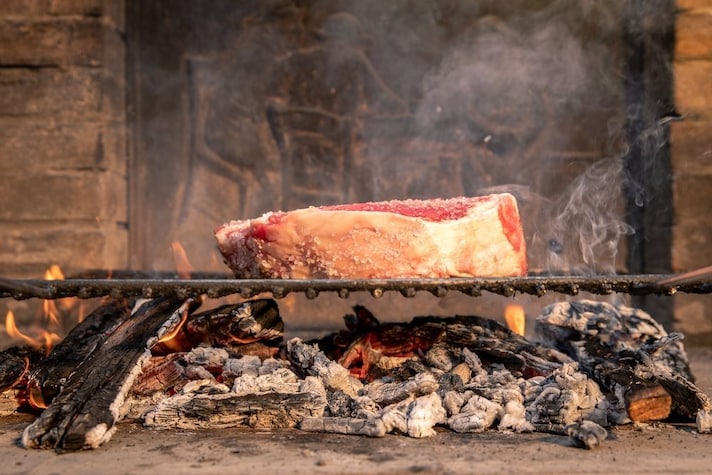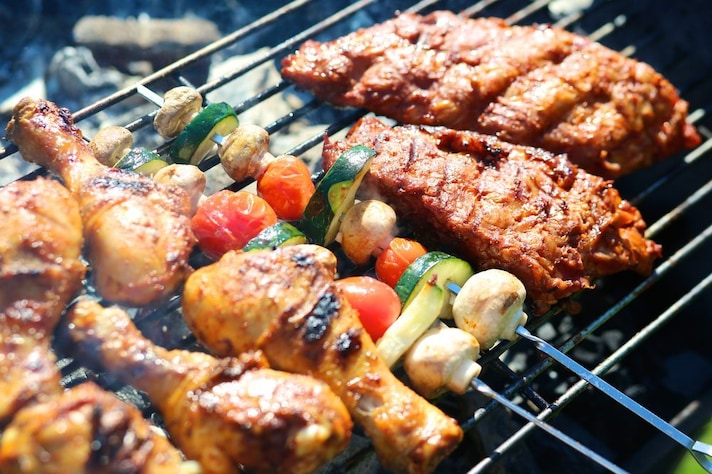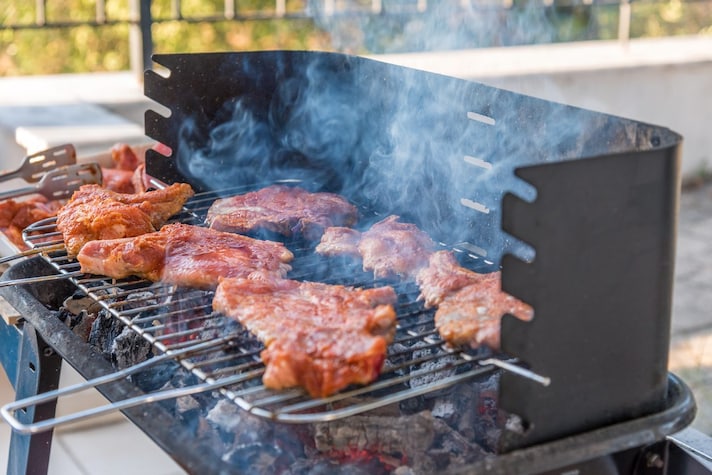
Grilling isn't like cooking at home. Whether it's a succulent steak, crispy vegetables, or fragrant fish, the secret to a perfect barbecue lies in one fundamental element: the embers. But transforming a bed of burning coals into the ideal cooking tool is an art that requires attention, patience, and a pinch of mastery. Here's a guide to mastering the art of grilling, revealing every secret, from choosing the fuel to cooking, to transform every barbecue into a satisfying experience. Get ready to ignite the passion and amaze your guests with recipes and preparations worthy of a true grill master.
The Choice of Fuel
The quality of the embers depends largely on the fuel you choose. The main options are wood, which will provide flavorful cooking and long-lasting embers; charcoal, a more practical solution that provides a high and constant temperature; and braze, which guarantees high temperatures in a short time. Here are the pros and cons of each of these options.
Wood
Wood is the most traditional and appealing choice because it imparts an unmistakable aroma to food, which varies depending on the type of wood. Choosing wood guarantees excellent heat output, long-lasting embers, and aromatic smoke that can enrich the flavor of food. But what type of wood should you choose? Hardwoods (such as oak, beech, hornbeam, olive, maple, cherry, and walnut) burn more slowly and evenly, producing embers that maintain a constant temperature for a longer period. Well-seasoned wood (dried for at least 12-24 months) with a moisture content of less than 20% is preferable, which ensures efficient combustion with less smoke.
As for the type of wood, it depends on what you're roasting and what you have available: oak, for example, is suitable for all types of meat, while beech is excellent for meats like lamb, pork, poultry, or even fish and cheese, thanks to its ability to enhance the herbaceous flavor. Olive wood emits a delicate smoke and is ideal for white meats, fish, and lamb, while maple is excellent for poultry and vegetables. Cherry wood also pairs well with poultry, pork, veal, and fish, while hickory wood is ideal for game.
More than choosing the right wood, it's important to remember which wood to avoid: resin-laden wood, such as pine, fir, and larch, produces pungent smoke, unpleasant odors, and can release toxic substances that contaminate food. Green or imperfectly dry wood, which contains too much moisture, burns poorly, producing a lot of smoke and little heat. Finally, treat or varnish wood should definitely be avoided, as it can release harmful chemicals during combustion.
Charcoal
This is a practical solution because charcoal ignites quickly and provides a high, consistent temperature. Choose good-quality charcoal, preferably in large pieces. Avoid "self-igniting" charcoal impregnated with chemicals that can release unpleasant odors. Choose 100% natural charcoal, without added chemicals, glues, or ignition accelerants: good charcoal should simply be charred wood. As for the types of charcoal, the same rules apply as for wood.

Braze
Braze is a solid fuel obtained from the incomplete combustion (pyrolysis) of wood or other plant materials (such as coconut shells or olive pomace) in the absence of oxygen. This process reduces the water and volatile content, concentrating the carbon. Commercially available braze is generally ground into smaller, more uniform pieces.
Compared to wood, and often even large pieces of charcoal, braze lights more quickly due to its smaller size and larger exposed surface area. It also reaches high temperatures relatively quickly, making it excellent for quick, direct cooking (steaks, burgers, kebabs, etc.). It's not necessarily "better" than charcoal: this is preferable if you're looking for embers that last longer and want to experiment with the specific flavors of different woods. If you're short on time, you can opt for braze.
Lighting the Embers
Lighting the grill is a crucial step in determining the success of the barbecue: avoid using flammable liquids that can contaminate the food with unpleasant and dangerous odors. Here are some effective methods:
- Chimney starter. The most efficient and safe method: also called a "chimney starter" or simply a "chimney," it is a cylindrical metal device (usually galvanized steel) designed to quickly, safely, and efficiently light wood, charcoal, or briquettes. Fill the chimney with fuel, place eco-friendly firelighters underneath (wax cubes, newspaper rolled up with vegetable oil), and wait until the top of the charcoal/wood is covered in white ash.
- Natural firelighters. If you don't have a fireplace, you can use eco-friendly wax cubes, eco-friendly firelighters made from wood and beeswax, or newspaper. Place them at the base of the fuel pile and light them.
- Paper and thin kindling. Create a small pile of thin kindling on top of crumpled paper. Once the kindling catches fire, gradually add larger pieces of kindling or charcoal.

The Formation of The Embers
Once the fuel is lit, it's essential to wait for it to turn into live embers. This phase requires patience and attention: let the wood burn completely, forming glowing embers covered with a veil of white ash. For the braze, wait until all the pieces are glowing and covered with ash. Once ready, distribute the embers evenly under the grate, taking into account the different heat zones needed for cooking different foods: you can create zones of more intense heat and zones of more moderate heat.
The ideal grill temperature is measured by gently bringing your hand close to the grill grate. If you can hold it for about 2-3 seconds before feeling too hot, the temperature is high (ideal for quick searing). If you can hold it for 4-5 seconds, the temperature is medium (suitable for longer cooking times).
The Type of Grill to Use
Choosing and maintaining your grill is important for optimal cooking. As for materials, stainless steel grates are durable and easy to clean, while cast iron grates retain heat better and leave a beautiful mark on the meat, although they require more care to prevent rust.
Clean the grill thoroughly before and after each use to prevent charred residue from sticking to the food and altering its flavor. You can use a wire grill brush and lemon to eliminate odors. Lightly grease the grill with heat-resistant vegetable oil (e.g., peanut oil) before placing food on it to prevent sticking.

How to Cook Food
Grilling is an art that requires sensitivity and attention to detail. Grilling is different from the cooking we're used to at home: here are some tips that will come in handy for your first barbecues. The rest is in practice.
- Distance from the coals. Adjust the height of the grill above the coals based on the type of food and the desired heat. Thicker meats require slower cooking at a greater distance to cook evenly without burning the outside. Thinner cuts and vegetables can be cooked at a closer distance.
- Managing flare-ups. Avoid direct flare-ups that can burn food: if flames rise, temporarily move the food to a cooler area or carefully spray the coals with water.
- Don't turn the food constantly, but let a nice crust form on one side before turning. Use tongs to turn the meat, avoiding piercing it to prevent the juices from escaping. For thicker cuts of meat, using a kitchen thermometer is essential to ensure they reach the desired internal temperature.
- Resting the meat. After cooking, let the meat rest for a few minutes: this allows the juices to redistribute, making it more tender and juicy.
- While cooking, you can add fresh herbs (rosemary, thyme, sage) directly onto the embers to flavor the food with an aromatic smoke.
- After you're done cooking, let the coals burn out completely and then clean the grill thoroughly.
;Resize,width=767;)
